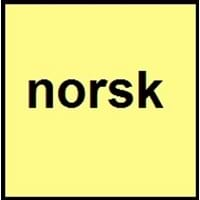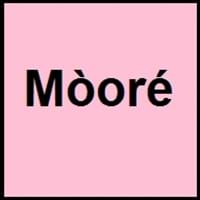Norwegian and Mossi
Countries
Norway
Burkina Faso
National Language
Norway
Benin, Burkina Faso, Ghana, Ivory coast, Mali, Togo
Second Language
Not spoken in any of the countries
Not spoken in any of the countries
Speaking Continents
Europe, South America
Asia
Minority Language
Nynorsk
Not spoken in any of the countries
Regulated By
Norwegian Language Council
Not Available
Interesting Facts
- Bergen is one of the Norwegian dialect which has only two genders: common and neuter.
- Since Norwegian language uses pitch accents, it has musical quality and are sometimes employed to distinguish the meanings of homonyms.
- Mossi languages use pitch to distinguish meanings.
- Mossi is the 2nd largest ethnic group in Ivory Coast.
Similar To
Swedish and Danish Languages
Dagbani Language
Derived From
Not Available
Not Available
Alphabets in
Norwegian-Alphabets.jpg#200
Mossi-Alphabets.jpg#200
Writing Direction
Left-To-Right, Horizontal
Not Available
Thank You
takk
Laafi bala
How Are You?
hvordan har du det?
Laafi beme ?
Good Night
god natt
Ne y yungo
Good Evening
god kveld
ne y zabre
Good Afternoon
god ettermiddag
Kia ora
Good Morning
god morgen
Ne y yibeogo
Please
Vær så snill
gafare
Bye
ha det
Wend na kon-d nindaare
I Love You
Jeg Elsker Deg
Kei te aroha au ki a koe
Excuse Me
unnskyld meg
Y gafare
Dialect 1
Jamtlandic
Ouapadoupou
Where They Speak
Jamtland,Harjedalen
Burkina Faso
How Many People Speak
Not Available
Dialect 2
Sognamål
Saremde
Where They Speak
Sogn
Burkina Faso
Dialect 3
Hallingmål-Valdris
Taolende
Where They Speak
Hallingdal, Valdres
Burkina Faso
Speaking Population
Not Available
Alternative Names
Norsk
Not Available
French Name
norvégien nynorsk; nynorsk, norvégien
moré
German Name
Nynorsk
Mossi-Sprache
Pronunciation
[nɔʂk] (Eastern Norwegian)
[nɔʁsk] (Western Norwegian)
Not Available
Ethnicity
Norwegians
Mossi
Origin
c. 1300 AD
Not available
Language Family
Indo-European Family
Niger-Congo Family
Subgroup
Germanic
Western Sudanic
Branch
Northern (Scandinavian)
Gur (Voltaic)
Early Forms
Old Norse language, Old Norwegian, Middle Norwegian, Modern Norwegian
No early forms
Standard Forms
Nynorsk, Bokmål
Mossi
Signed Forms
Signed Norwegian
Not Available
Scope
Macrolanguage
Individual
ISO 639 1
no
No data Available
ISO 639 6
Not Available
Not Available
Glottocode
norw1258
moss1236
Linguasphere
52-AAA-ba to -be; 52-AAA-cf to -cg
No data Available
Language Type
Living
Living
Language Linguistic Typology
Subject-Verb-Object
Not Available
Language Morphological Typology
Fusional
Not Available
All Norwegian and Mossi Dialects
Most languages have dialects where each dialect differ from other dialect with respect to grammar and vocabulary. Here you will get to know all Norwegian and Mossi dialects. Various dialects of Norwegian and Mossi language differ in their pronunciations and words. Dialects of Norwegian are spoken in different Norwegian Speaking Countries whereas Mossi Dialects are spoken in different Mossi speaking countries. Also the number of people speaking Norwegian vs Mossi Dialects varies from few thousands to many millions. Some of the Norwegian dialects include: Jamtlandic, Sognamål. Mossi dialects include: Ouapadoupou , Saremde. Also learn about dialects in South American Languages and North American Languages.
Norwegian and Mossi Speaking population
Norwegian and Mossi speaking population is one of the factors based on which Norwegian and Mossi languages can be compared. The total count of Norwegian and Mossi Speaking population in percentage is also given. The percentage of people speaking Norwegian language is Not Available whereas the percentage of people speaking Mossi language is 0.11 %. When we compare the speaking population of any two languages we get to know which of two languages is more popular. Find more details about how many people speak Norwegian and Mossi on Norwegian vs Mossi where you will get native speakers, speaking population in percentage and native names.
Norwegian and Mossi Language Codes
Norwegian and Mossi language codes are used in those applications where using language names are tedious. Norwegian and Mossi Language Codes include all the international language codes, glottocodes and linguasphere.





